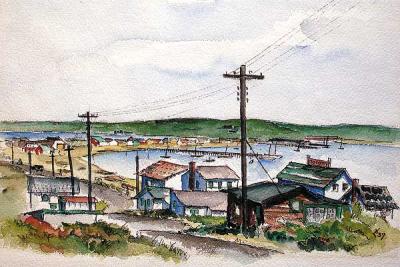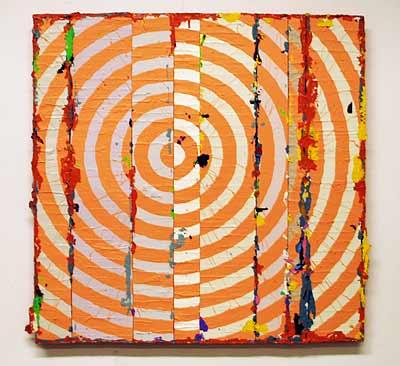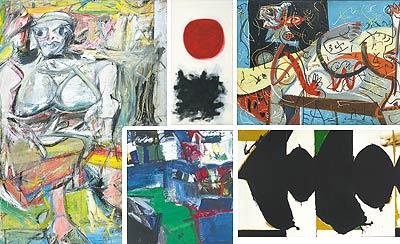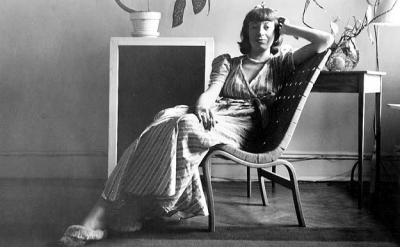Composers of the East End
Composers of the East End
On Sunday afternoon the Chamber Players of the Southampton Cultural Center presented the fifth annual Composers of the East End concert, featuring (this time) the music of Bruce Wolosoff, Stephen Dickman, Victoria Bond, and Eric Salzman. The concert was the last of the center’s chamber music series for 2010-11, with Marc Levine on violin, Gloria Shih on piano, and Dylan Benson on percussion.
As one might guess, each composer’s style was very different and personal, and it was especially interesting to note that almost all of the titles gave a suggestion of an extra-musical source of inspiration.
Mr. Wolosoff’s “Mad Maude, and Other Tales,” scored for piano and violin, was first played at the Music Festival of the Hamptons a few years ago. I didn’t hear it then, but I was glad I heard it this time.
Each of the six movements is a bit autobiographical, he said. For example, the title piece refers to a woman he saw in a dream; “The Night Ferry” refers, yes, a ride on the Shelter Island ferry, and when he once fell ill he musically paraphrased Dylan Thomas, “I Will Not Go Gentle. . . .”
Mr. Wolosoff blends various styles, in this case mostly jazz, blues, and boogie, and even a bit of fiddling for Irish Maude, and he does so in a genuine and individual way. He is a composer who knows what he is doing.
Mr. Levine’s playing on the violin was exceptional from the beginning, and especially noticeable in the agitated and rhythmic “I Will Not Go Gentle. . . .”
For quite a change of pace, Mr. Dickman’s “Audience Participation Piece” was next. He gave some stage directions, for those who wanted to be part of the chance music: Sing (or say) “ah” or “oh,” on any pitch, for any length of time, with various crescendos or decrescendos.
And it happened. Someone started, others followed. It was quite effective and creative (remember, there were composers and musicians in the audience). The timbre was interesting, and it was apparent that many got into it. It reminded me somewhat of the Paul Winter Consort, which used whale song so effectively. The ah-ing and oh-ing went on for a few moments, and gradually of its own accord came to a natural, quiet ending. You had to be there to appreciate it. How ’60s and ’70s!
Mr. Dickman’s “Trees and Other Inclinations” was inspired by looking at tree branches and imagining musical lines based on their shapes. It is for piano solo, with somewhat sparse textures, prickly harmonies, and intricate rhythms.
It was an opportunity for Ms. Shih to shine. Often the pianist, though always present with a musical underpinning, is overshadowed. Ms. Shih was solid and unwavering throughout the afternoon, but this was one place where she had the spotlight, and she handled it superbly.
Who would have thought of radium, the chemical element, as a stimulus for music? Ms. Bond did, when she was commissioned to compose for an event in Oak Ridge, Tenn., the home of the Manhattan Project, on a program with Marie Curie as its theme. When a scientist friend said something to her about stable and unstable elements, she thought of the regular and irregular elements (to use a pun) in music, as in rhythm and form.
The result was the two-movement work “A New Light” for piano, violin, and percussion. Mr. Benson’s array of instruments — or, better, Ms. Bond’s choice and scoring of them — was remarkable: drums of various kinds, pitched and unpitched, cymbals, a gong, a glockenspiel, and wood blocks.
The two movements, “Inner Light” and “Stable and Unstable Elements,” were evocative, intriguingly engaging, and, given the percussion forces at hand, wonderfully subtle. Each instrumentalist had a cadenza; Mr. Benson literally had to choreograph his, which in no way detracted from the musicality of it. A “wow” to the composer and players alike.
From radium to a gangster, circa the 1930s, Mr. Salzman’s theater piece “The True Last Words of Dutch Schultz” is based on a police stenographer’s record of the mobster’s last remarks, which the composer described as “an extraordinary gangster stream-of-consciousness poem.”
The full production has been mounted a number of times, including in New York and in Europe. What we heard was a suite adapted from it for piano, violin, and percussion. Mr. Salzman gave a brief description of each act.
In places, one could hear echoes of the big-band era. In other places one could hear plainer vocal lines, but I wondered what was being said. There were indeed many moods that were curiously juxtaposed.
It was not, honestly, and unfortunately, until I got home and looked up more about the original theater piece and the libretto that I had a fuller understanding of the work and its complexities. The words are sometimes feverish, sometimes rhymes; there are ramblings, outbursts, and even humor. Occasionally panting is portrayed, or a heartbeat.
Having a written description or libretto to follow as the work unfolded would have added greatly to the audience’s appreciation of the music, since its form, color, and emotion are seemingly very connected to the very disjointed words. I would like to hear it again knowing what I know now.
As is too often the case with contemporary “classical” music, the audience size was disappointing. The big-name classical and romantic composers usually draw a rather full house. The four composers heard during this concert, as well as the performers, have numerous solid credentials. The afternoon was entertaining, uplifting, and edifying, and brought smiles, laughs, and bravos, and while it might have been just a bit of a listening stretch for some, it was well worth it.
In his opening remarks, Mr. Wolosoff quipped that one of the goals of the program was to dispute the notion that the only good composer is a dead composer. (Or, some might say, a European composer.) For the entire program, mission accomplished, and much more.




